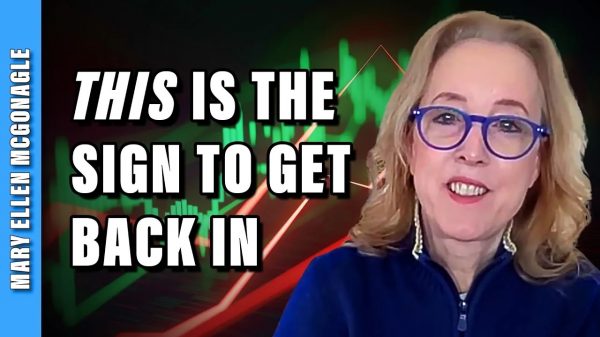
We are observing a great debate between the US banking regulators who wish to impose new, so-called “Basel III Endgame” rules to significantly increase bank capital, on one side, and the banks who argue they already have more than enough capital, joined by various borrowing groups who fear loans to them may be made more expensive or less available, on the other. It has been described as “the biggest fight between banks and regulators in the US in years.”
Said the president of the Financial Services Forum, “Additional significant capital increases, such as those of the Basel III Endgame proposal, are not justified and would harm American households, businesses and the broader economy.”
The Acting Comptroller of the Currency “pushed back at banks’ claims…saying the lenders could always cut dividends and buybacks instead.”
The debate generated similar disagreements among members of the Senate Banking Committee in a December 2023 hearing and is ongoing.
Leaving aside the fact there never can be an end to the endless and heavily political arguments about bank capital, what is most remarkable in this debate is what is not discussed. Not discussed is that the Basel risk-based capital requirements completely leave out interest rate risk. In its most common form that is the risk created by lending long at fixed interest rates while borrowing short at floating rates, which can be dangerous, even fatal, to the bank.
Excessive interest rate risk was a principal cause of the large bank failures of 2023, three of the largest failures in US history — Silicon Valley Bank, Signature Bank, and First Republic Bank. Widespread vulnerability due to interest rate risk among banks was, at that crisis point, the reason the American financial regulators declared that there was “systemic risk” to financial stability, so they could make exceptions to the normal rules. These involved promising to pay off uninsured depositors in failed banks with money taken from other banks; having the Federal Reserve offer loans to banks without sufficient collateral, so they would not have to sell their underwater investments; and as in every crisis, offering words of assurance from government and central bank officials that really banks were secure — although this does seem inconsistent with declaring a systemic-risk emergency.
Banking expert Paul Kupiec, in an extensive bottom-up analysis of US banks, concludes that the interest rate risk on their fixed rate securities and loans has resulted in an aggregate mark to market, unrealized but economically real, loss of about $1.5 trillion — a staggering number. The tangible capital of the entire banking system is about $1.8 trillion. The market-value losses on interest rate risk would thus have consumed approximately 80 percent of the banking system’s total tangible capital. If that is right, the banks on a mark-to-market basis would have only about 20 percent of the capital they appear to have. A less pessimistic, but still very pessimistic, analysis suggests that the fair value losses on securities and loans of banks with $1 to $100 billion in assets have in effect reduced regulatory capital ratios by about 45 percent. Applying this to the whole system would suggest a mark-to-market loss from interest rate risk of about $1 trillion. The banking system thus displays a dramatically diminished margin for error, just as it faces the looming losses from the imploding sectors of commercial real estate, a common villain in financial busts.
That interest-rate risk is fundamental is obvious, basic Banking 101. But it is a risk nonetheless very tempting when the central bank has artificially suppressed interest rates for long periods, as it did for more than a decade. Lots of banks succumbed as the Fed, playing the Pied Piper, led them into the current problems. Recent press reports tell us: “Rising Rates Hit Regional Lenders”; “US banking sector earnings tumble 45%” as “the swift rise in interest rates…continues to weigh on lenders”; “Truist Financial swung to a loss”; “Citigroup …reported a net loss for the fourth quarter 2023 of $1.8 billion”; “Higher-for-longer interest rates remain the key risk for real estate assets globally”; and “Bank losses worldwide reignite fears over US commercial property sector”.
The Federal Reserve itself is suffering mightily from the interest rate risk it induced. Its operating losses now exceed $150 billion, and its mark to market loss is approximately $1 trillion. If the aggregate market value loss of the banks is $1 trillion to $1.5 trillion, when we consider the greater banking system to include both the banks and the Fed, its total loss due to interest rate risk is about $2 trillion to $2.5 trillion. The Fed is belatedly introducing into its stress test ideas “exploratory scenarios,” to test the effects of rising interest rates. But “the results will not be used to calculate [required] capital.”
Interest-rate risk was at the heart of the notorious collapse of the savings and loan industry in the 1980s, the hopeless insolvency of its government deposit insurer, and the ensuing taxpayer bailout. People thought the lesson had been learned, and probably it had, but it seems it was forgotten.
Interest-rate risk remains particularly relevant to mortgage finance, mortgages being the largest credit market in the world after government debt, because of the unique devotion of American financial and regulatory politics to 30-year fixed rate mortgages, which are notably dangerous. So are very long-term fixed-rate Treasury bonds, but bank regulation always promotes buying Treasury bonds to help out the government. Both long Treasuries and 30-year mortgages in the form of the mortgage-backed securities guaranteed by government agencies are in current regulation included as “High Quality Liquid Assets.” The agency MBS are given very low risk-based capital requirements. Treasuries are always described as “risk-free assets” and given zero risk-based capital requirements. But of course they both can and have created plenty of interest rate risk.
However the in-process “Basel III Endgame” debate turns out, Basel international risk-based capital requirements will still fail to address interest rate risk. They will still promote investing in 30-year agency MBS and long Treasuries, in spite of their riskiness. This serves the political purpose of favoring and promoting housing and government finance, but not the soundness of the banking system.
A complete process of including interest rate risk by measuring the dynamic net exposure to interest rate changes of the total on- and off-balance sheet assets, liabilities and derivatives of a bank, and appropriately capitalizing it, would doubtless be a task of daunting complexity for risk-based capital calculations under the Basel agreements, as evidenced by the Basel Committee’s “Standards — Interest rate risk in the banking book.” But an extremely simple fix to address very large amounts of interest rate risk is readily available.
This is simply to correct the woefully low risk-based capital required for 30-year agency MBS and for very long Treasury debt. These miniscule capital requirements get rationalized by very low credit risk, but they utterly fail to reflect very high interest rate risk.
The risk-based capital required for Treasuries, to repeat, is zero. The risk-based capital for 30-year fixed rate mortgages in the form of agency MBS merely 1.6 percent (a risk weighting of 20 percent multiplied by the base of 8 percent). Contrast this zero or minimal capital to the market value losses now being actually experienced. Using as a benchmark the losses the Federal Reserve had on its investments as of September 30, 2023:
Treasuries A loss of 15 percent
Agency MBS A loss of 20 percent
That more capital than provided under the Basel rules is needed to address the interest rate risk of these long term, fixed-rate exposures appears entirely obvious.
I suggest the risk weights of these investments, so potentially dangerous to banks (not to mention to central banks), should be increased to 50 percent for 30-year agency MBS and 20 percent for long Treasuries, thus giving us risk-based capital requirements of 4 percent (instead of 1.6 percent) for long agency MBS and 1.6 percent (instead of zero) for long Treasuries.
These are guesses and approximations, of course. While simple, they come much closer to addressing the real risk than does the current system. It is time to learn and apply the expensive lessons of interest rate risk once again.
Two sets of objections will vociferously be made. The housing complex will complain that this will make mortgages more expensive. The Treasury (and all finance ministries) will complain that this will make ballooning government deficits more expensive to finance. What do we want? To match the capital to the real risks, or to manipulate the capital regulations to subsidize politically favored borrowers?
I am for the former. Lots of people, alas, are for the latter. This is a perpetual problem of political finance.


























